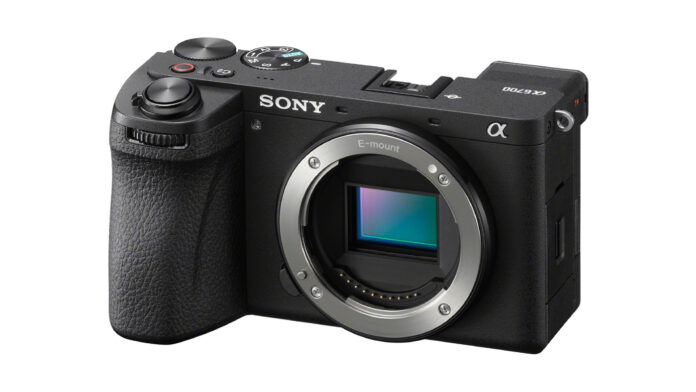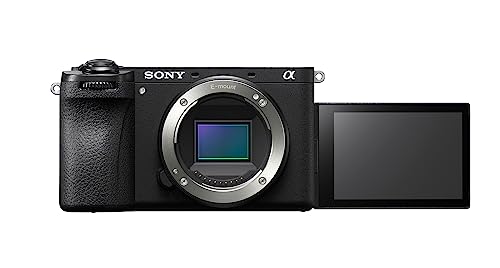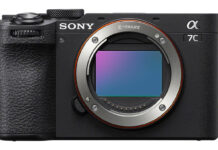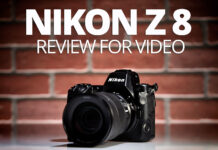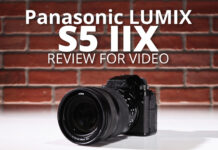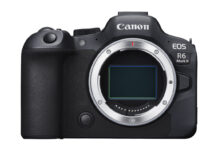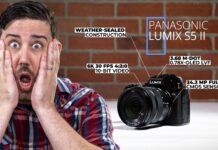The Sony a6700 is the newest member of the Sony lineup of enthusiast-level APS-C mirrorless cameras, and it brings a slew of new features and improvements. The camera comes with a 26 MP Back Side Illuminated (BSI) CMOS APS-C sensor paired with the Bionz XR processor, which features a dedicated AI Processing Engine. This combo boosts the camera’s overall image quality and performance.
So, is the Sony a6700 worth its price tag? Let’s take a look.
What’s new?
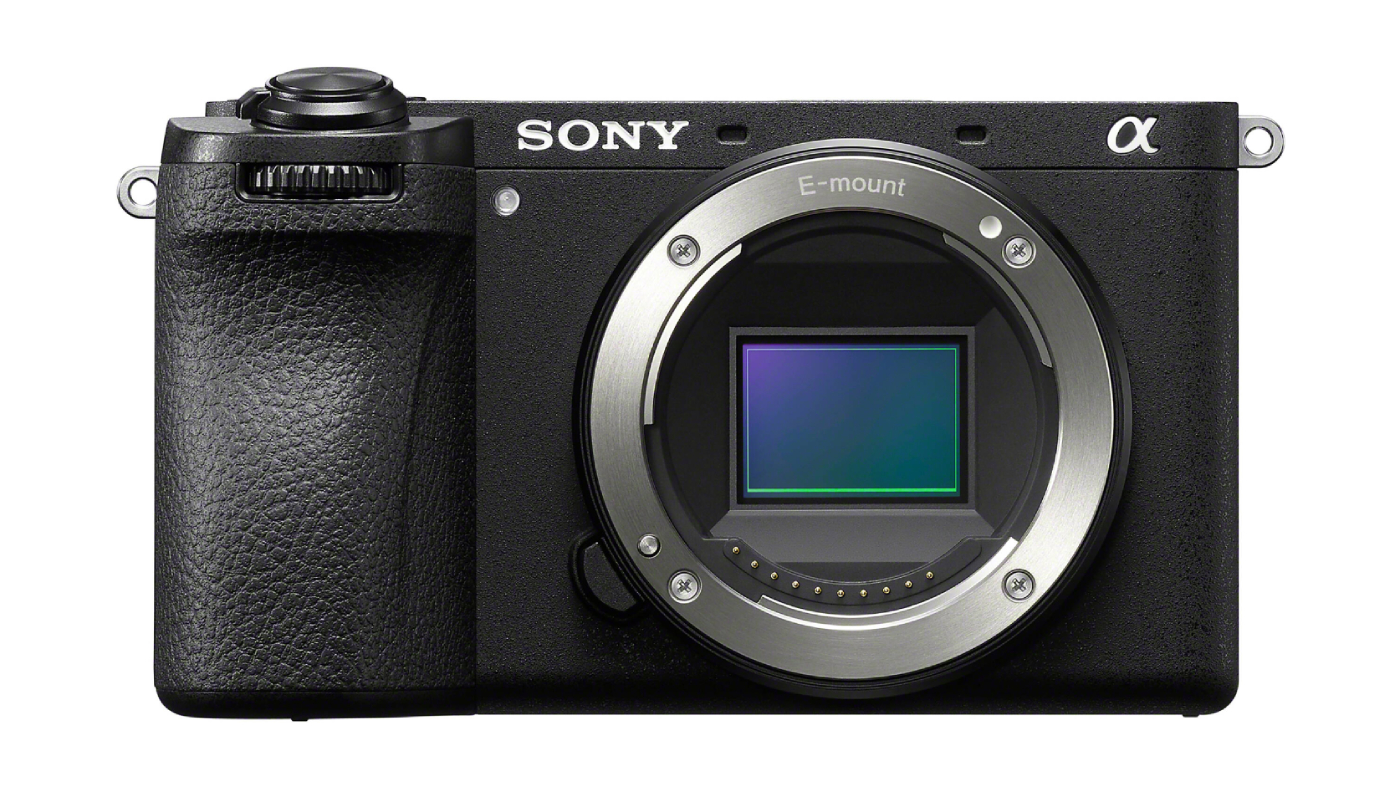
The Sony a6700 introduces a range of new features and upgrades to the a6x00 series:
- Sensor: One highlight of the a6700 is its 26 MP BSI CMOS APS-C sensor, inherited from the FX30 Cinema line. This offers better low-light performance and enhanced image quality compared to the 24 MP Exmor sensor in its predecessor. Plus, the a6700 can now shoot at 11 fps using the electronic shutter and capture 10-bit HLG stills in HEIF format.
- Video: The a6700 can shoot up to 4K/60p across its full sensor width or up to 120p from a 1.58x cropped area. Notably, it captures video in 10-bit precision and up to 4:2:2 color, offering more flexible log footage and full HLG HDR video.
- Design: A standout design improvement is easier access to direct controls. The new model features a front dial for more forefinger control. Under the main dial is another one that switches between stills, video and S&Q (slow-motion and timelapse), making it simpler to toggle modes without losing settings.
- Autofocus: Subject recognition has been improved in this new model, allowing for human body, head, face and eye tracking, as well as tracking for vehicles, animals, birds and now insects. The sensor boasts a wide coverage of 759 phase-detection AF points, spanning 93 percent of the image area, compared to the a6600’s 425 AF points, covering 84 percent. It’s also able to focus in low-light down to -3 EV. Sony claims the autofocus performance is 20 percent more reliable than the previous generation.
- Processor: The most notable hardware update is the incorporation of the latest Bionz XR processor. The new processor features a specialized processor for managing complex AI algorithms developed through machine learning. This combination of processors, first seen in the company’s ZV-E1 full-frame vlogging camera, is a significant advancement for the APS-C series.
In addition to providing the power to support the camera’s subject recognition AF modes, the Bionz XR processor also enables the a6700 to match the ZV-E1’s vlogging features. Specifically, it can identify a subject, zoom in on it and interpolate the video back to your desired output resolution in real time.
Video capabilities
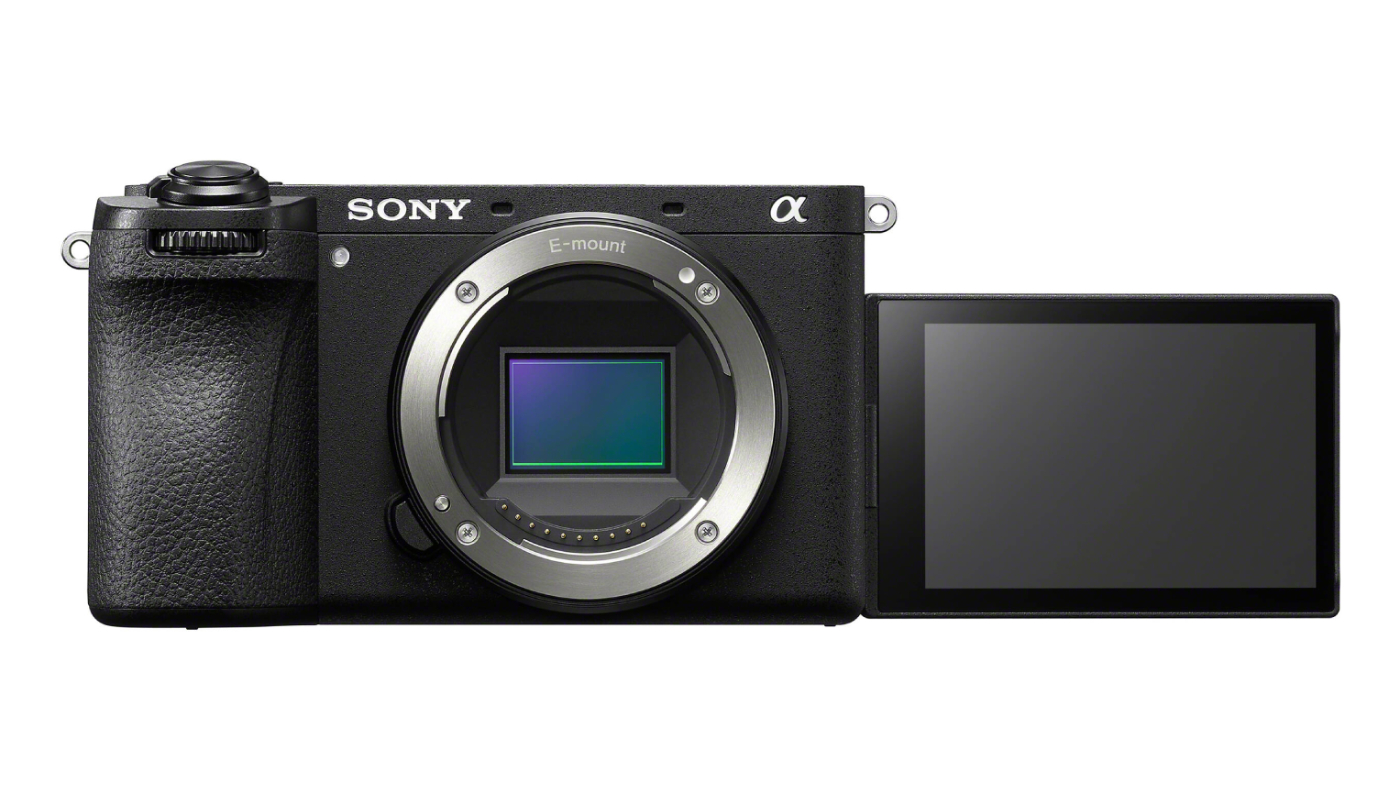
For video capabilities, the Sony a6700 has a noteworthy toolkit. It supports 4K video recording at up to 60p from 6K capture and even offers a 4K/120p option with a 1.58x crop. The camera provides 10-bit video with a choice of 4:2:2 or 4:2:0 color sampling, catering to videographers who need post-processing flexibility. You can choose from XAVC HS (H.265), XAVC-I (All-I H.264) or basic XAVC-S (Long GOP H.264). If you’re going to use the ALL-I options, we recommend using the fastest SD card available to you.
It also offers profiles such as S-Cinetone, S-Log3 and HLG, along with the ability to upload custom LUTs for more creative control. You can either apply them directly to the footage or use them solely for preview. If you opt for the latter, you can embed the LUTs with your video files for post-production.
The a6700’s Active Stabilization adds digital stabilization to its in-body system, applying a 1.1x crop to the footage. This allows the camera to move the crop around to correct for more dramatic motion than sensor-shift stabilization alone can handle. All this data is saved into the video file. Later, you can adjust the level of correction in the Sony Catalyst post-production software. This is handy for walking and panning shots, but for more dramatic movements, you’ll want a gimbal or similar accessory.
Unfortunately, the a6700 is prone to overheating, particularly in 4K modes and at higher frame rates. Even 10 minutes of 4K/24p shooting can trigger overheat warnings. You can enable its high heat option to delay these warnings, but be cautious. This lets the camera keep recording despite a rise in internal temperature, and it will operate even when significantly hot. If you only need a variety of short clips and turn off the camera in between, you can avoid these issues. For longer filming sessions like commercials and movies, consider Sony’s FX30 from the Digital Cinema Line. That camera includes a built-in fan.
Autofocus
The a6700’s standout feature is its advanced autofocus system. This model’s autofocus continues the well-established camera autofocus technology from Sony. However, it’s only the third camera to incorporate the new Sony AI Processing Unit.
Familiar to Sony enthusiasts, the a6700 offers a selection of seven AF area sizes. These range from ‘Wide,’ which covers the entire frame, down to individual AF spots. When in AF-C mode, you have access to ‘tracking’ variations for each AF area, giving you control over how you specify a subject for tracking. Users have the flexibility to adjust both the speed of AF transitions and the responsiveness of the AF system when switching between subjects. Also, the touchscreen can be utilized during video recording to choose a subject for AF tracking or to prioritize one subject over another.
With 759 AF points covering 93 percent of the frame, the camera offers arguably the absolute most impressive AF tracking and subject recognition in its class. This capability extends to various subjects, including humans, animals, birds, insects, cars, trains and airplanes. This makes it versatile for a wide range of photography scenarios. The camera’s ability to recognize and track different subjects is powered by its AI engine, leading to more accurate and reliable focusing. This capability makes it easier for photographers to precisely capture fast-moving or unpredictable subjects.
Sony has consistently led the field in autofocus tech, and the a6700 keeps that tradition alive. While competitors are catching up, Sony keeps setting new standards with each release, as evidenced by their newest APC-S model. No other camera company has embraced AI subject recognition as successfully as Sony. But, the a6700’s impeccable performance in this area might allow them to shift focus.
ISO
The a6700 touts a wide native ISO range of 100-32,000, extending to 50-102,400. The sensor doesn’t produce much noise. We didn’t notice much of it until we reached ISO 3,200. Detail declines past ISO 6,400 and gets really soft once you hit ISO 25,600. This performance is similar to the Canon R7.
In terms of shooting speed, the Sony a6700 lags a bit behind its competition. It can achieve a continuous shooting rate of 11 fps using either the mechanical or electronic shutter. The Fuji X-T5 can reach speeds up to 20 fps, while the Canon R7 goes up to 30 fps. However, with that being said, 11 fps was fine for our needs. The camera’s autofocus performance helps level the playing field here, making each shot count. Burst rates start to slow after about three seconds but clear up in less than 10 seconds with a fast SD card. However, note that the mechanical shutter should be used for fast-moving subjects.
Build
The Sony a6700’s ergonomics and design have been improved compared to its predecessors. It boasts an all-new body design that makes it more comfortable to hold and use. This model’s grip is designed to fit snugly in your hands. It’s even comfortable enough to hold and operate even with one hand. This new design makes the a6700 a great option for videographers shooting handheld for extended sessions.
The presence of both a front and rear dial further enhances its suitability for one-handed use. The camera’s compact form factor contributes to its comfortable design. The a6700 is 12.2 x 6.9 x 6.4 centimeters and weighs 493 grams. And that’s including the battery.
LCD screen
The fully-articulating LCD screen is a blessing for vloggers and those who require versatile shooting angles, although the resolution remains unchanged at 1.03 megapixels. This isn’t as ideal for macro and manual focus as its competitors’ screens, such as the Canon R7 (1.6 million dots) or the Fuji X-S20 (1.8 million dots), but it gets the job done. However, you can make the screen extra bright with its Sunny Weather mode. It doesn’t necessarily make sun hoods obsolete, but it’s a good addition nonetheless.
Electronic viewfinder
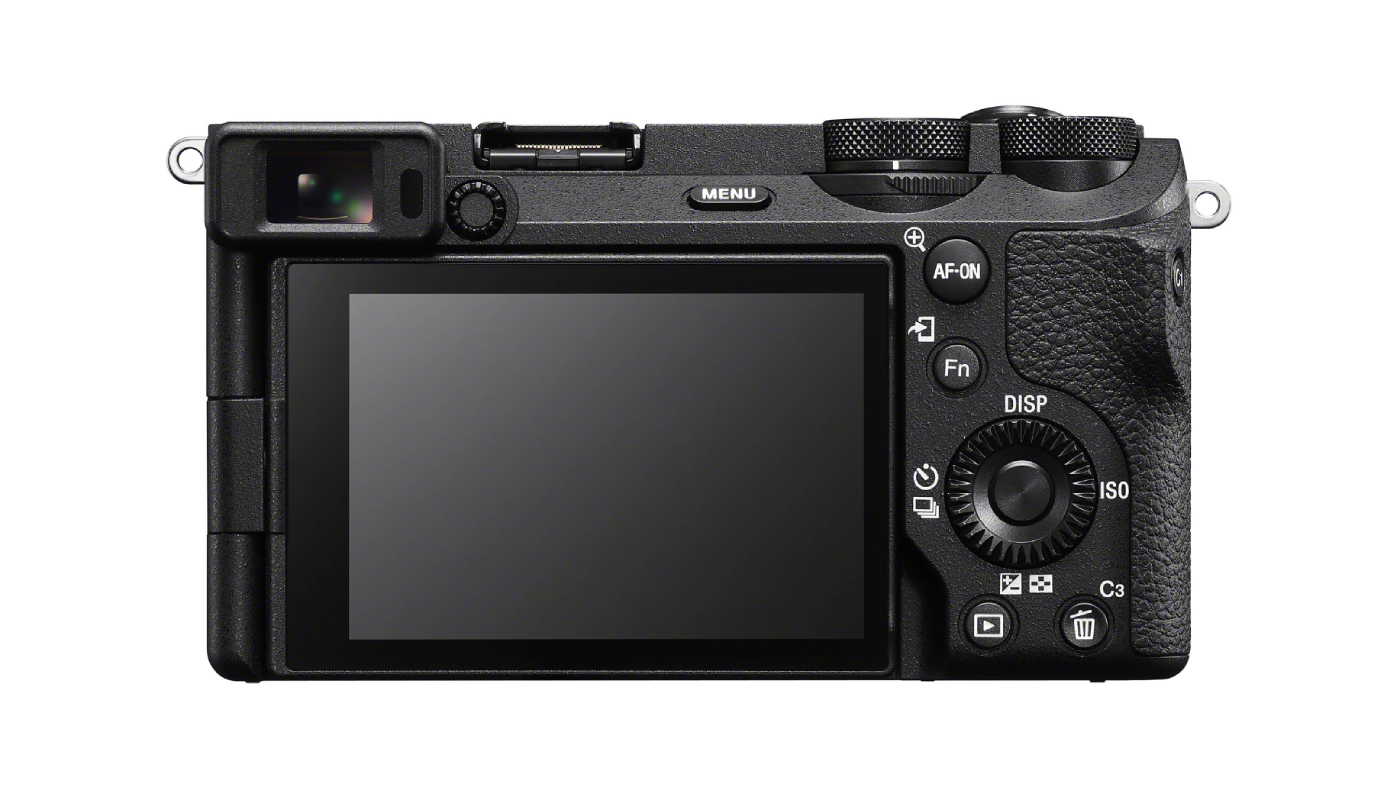
The electronic viewfinder (EVF) has also seen improvements, but not as many as some would hope. The 2.36 M dot OLED viewfinder has a resolution of 1024 x 768 pixels and can run at up to 120 fps. It sits in the left-hand corner rather than on top of the camera, which can take some getting used to. For those with a stronger left eye, this will feel cumbersome. It’s apparent that Sony did this to maintain this model’s extra-compact build. This design choice also makes using the camera with cages and other accessories easier. If you’re right-eye dominant or have balanced vision, the EVF’s placement shouldn’t be an issue.
Buttons and panels
The top panel is relatively uncluttered, featuring only two buttons: Record and C2. By default, C2 sets the focus area, but its function, like most other buttons, can be customized. The Mode dial rotates smoothly without needing a central post lock and includes basic options such as PASM, Auto and three custom modes.
On the back, the a6700 has two dials. One’s at the top-right corner and the other’s flat, next to the LCD screen. The latter allows for four directional presses (Display, ISO, EV and Drive/Self-Timer), with its central button serving as the OK/Set button for most functions. Additionally, there are Menu, AF-ON, Fn, Play and Delete/C3 buttons on the rear. It’s easy to overlook, but the C1 button (which defaults to White Balance) is also located on the right side as part of the rear thumb rest.
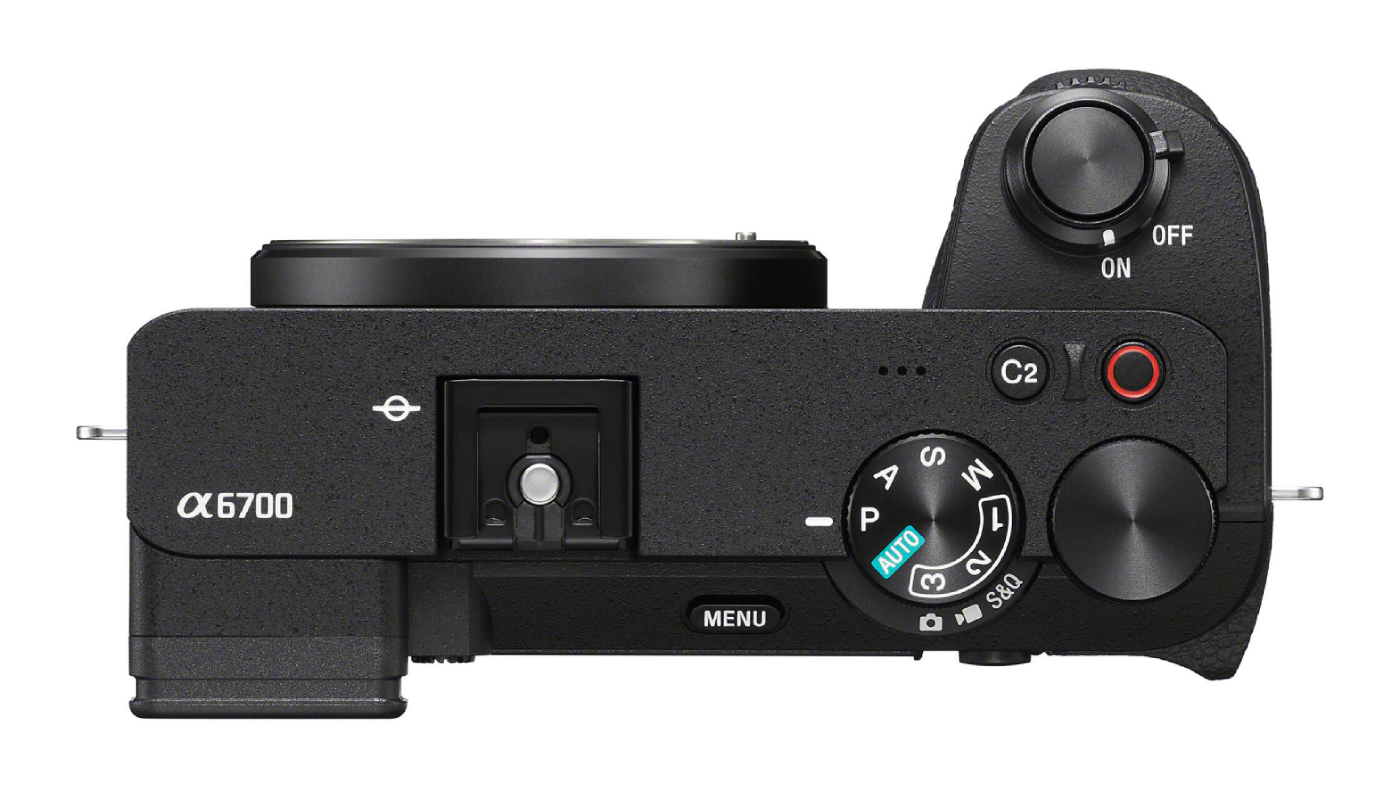
The camera’s new front dial is a major design shift. Thanks to the new dial, controlling the camera with both your forefinger and thumb is easier. This brings the a6700 in line with higher-end models, making it more user-friendly for photographers used to these kinds of controls. It’s common for our team members to wear multiple hats, capturing both stills and video. We appreciate that the a6700 addresses this need by featuring dedicated photo and video modes on a dial located conveniently below the main dial. It also has a third option that allows the user to switch to S&Q mode (slow motion and timelapse recording). This puts everything you need in a push of a button — or turn of a dial — and in an easy-to-reach location. This decreased the chance you’ll miss a crucial shot while changing gears from stills to video, or vice versa.
Battery
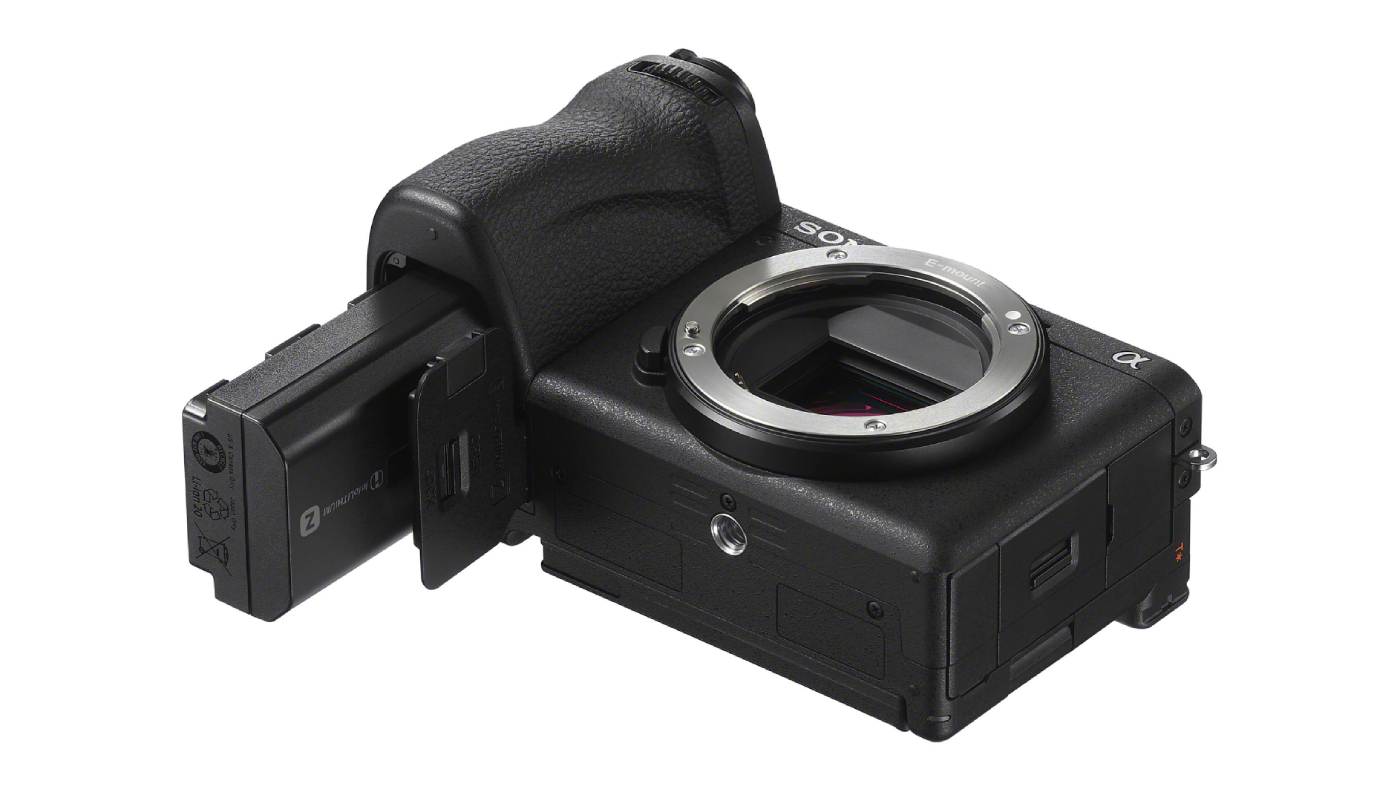
The a6700 uses the FP-Z100 battery, which is found in the current Sony Pro cameras and its predecessor. The Z battery is a top performer in the mirrorless category, rated to deliver 570 shots per charge with the rear LCD and 550 using the EVF. These estimates are based on high-drain scenarios, so actual performance may exceed these numbers. During our tests, battery life was never an issue. The battery can last all day or more on a full charge. If needed, the camera can also be powered and charged through its USB-C port.
Connectivity
The a6700 features 2×2 MIMO Wi-Fi for improved wireless connectivity. The camera also supports UVC/UAC streaming up to 4K/30, catering to content creators and live streamers. Available ports on the camera include:
- USB-C for power delivery and USB 3.2 Gen 2 (10Gbps) data transfer
- 3.5 mm headphone and microphone jacks for audio monitoring and recording
- Micro-HDMI output
- SD card slot
- Hot shoe for Sony accessories like a flash or microphone
Since there’s no CFexpress support, we recommend a fast UHS-II SD card if you plan to use the a6700’s burst modes or high data rate video.
Additionally, iOS and Android users can download the Sony “Creators’ App.” This app, which replaces the previous “Imaging Edge Mobile,” utilizes Bluetooth and both 2.4 GHz and 5 GHz Wi-Fi to enable remote control, remote viewing and file transfers. The app offers 5 GB of cloud storage if you register for a Sony account, although an account isn’t required to use the app.
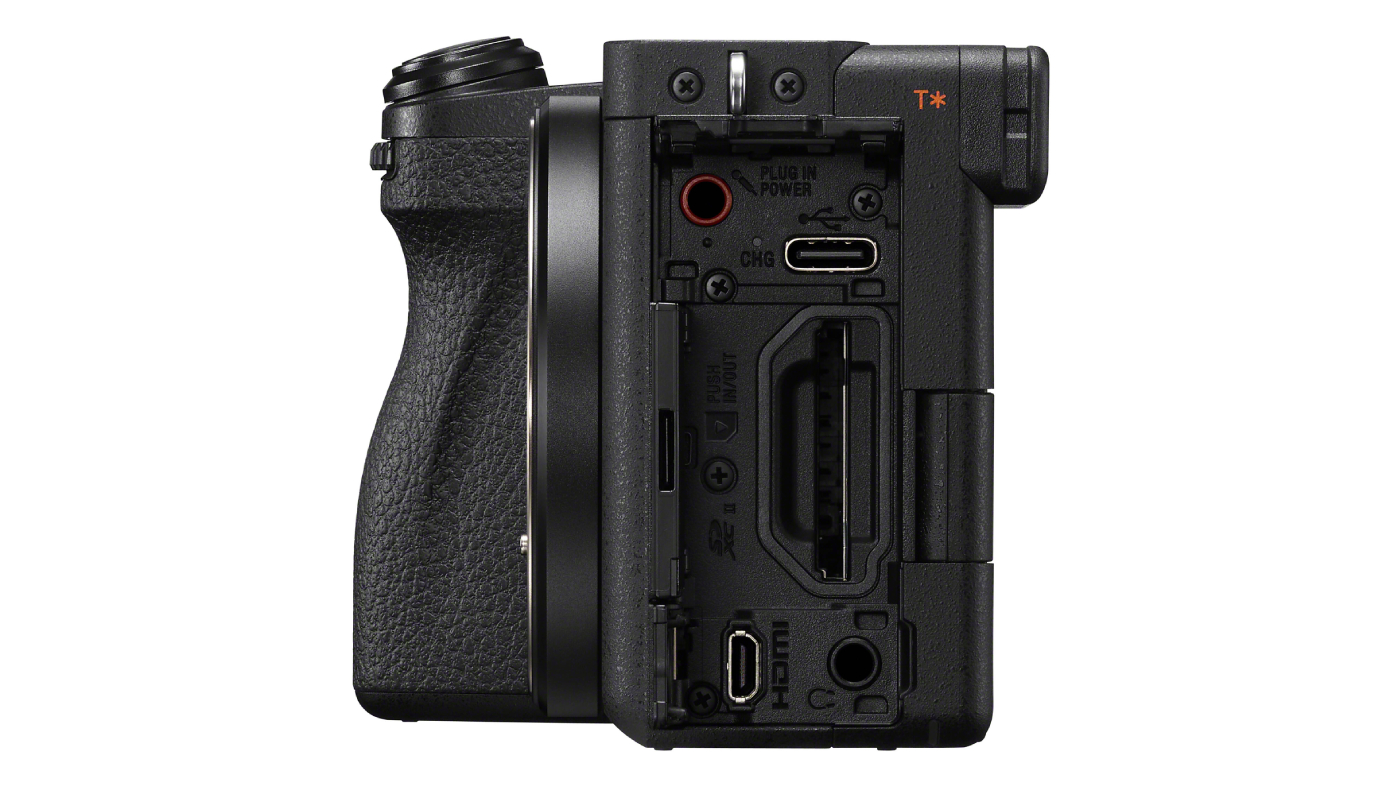
Photography
The camera supports four image formats: JPG, HEIF, Compressed RAW and Lossless Compressed Raw. The Lossless Compressed Raw option is a smart alternative for those with storage limitations, especially important for a camera with only one SD card slot. This format helps optimize storage without compromising image quality. Though not widely supported yet, capturing in HEIF format offers the advantage of 10-bit color, providing more post-production flexibility compared to 8-bit JPGs. However, if you plan on doing extensive editing, it’s best to stick to one of the RAW modes. The a6700 also provides creative JPEG color profiles, such as Black & White.
The a6700 unsurprisingly delivers sharp image quality. However, we would’ve liked to see a larger upgrade in megapixel count, considering this camera is four years in the making. For comparison, the 2020 Fujifilm X-T4’s 26MP sensor jumped to 40 MP with the recent release of the X-T5. This is something to think about if you plan on making large prints. But otherwise, it’s a small disadvantage compared to the host of other impressive features in the a6700. We are pleased by its vibrant yet natural colors, which seem to improve consistently with each new version of Sony’s sensors.
Marketplace
Canon R7
For photographers who don’t mind a bulkier build, the Canon EOS R7 is a solid choice. The R7 focuses more on stills, boasting a 33 MP sensor and fast shutter speed. The Canon can churn out 15 fps mechanically and 30 fps electronically, compared to the a6700’s 11 fps. This is worth considering if you need the speed. It also holds its own in video, offering 10-bit 4K footage along with subject recognition and tracking. However, there is a 1.81x sensor crop when recording in 4K/60, and it doesn’t support 4K/120 like the a6700.
Don’t expect autofocus to perform as well as it does on the a6700. However, manual shooters will benefit from the 1.62 million-dot screen, offering significantly better preview quality compared to the a6700’s 1.04 million-dot display. Additionally, the R7 has two UHS-II SD card slots, giving more storage options for event shooters.
With a larger build better suited for medium-sized and long telephoto lenses, the R7 may be the way to go for photographers focusing on wildlife and sports stills. You can purchase this camera at the same price point as the a6700 at $1,399.
Fujifilm X-S20
The biggest competition for the new Sony a6700 comes from Fujifilm. The Fujifilm X-S20 is one of the best all-around hybrid cameras you can buy right now. It has a similar sensor for stills but takes video a step further with 6.2K open gate footage.
The a6700 is more compact than the X-S20 and features weather sealing that’s notably absent from Fujifilm’s model. However, Fujifilm’s camera has a stabilization rating of 7.0 EV, providing two more stops of compensation than the a6700. Also, the X-S20 features an autofocus joystick that doubles as a menu navigation tool, a design choice that Sony skipped.
The X-S20 is $100 cheaper than the a6700, priced at $1,299. Additionally, the X-mount system used by the X-S20 offers a wide variety of lenses from Fujifilm and other brands that are lighter and less expensive than the selection you get from Sony.
Fujifilm also includes a dedicated vlogging mode in this camera, making it an easier pick for content creators looking for top quality and ease of use for the price.
Specs are a great objective tool for comparing cameras, but they also have their own subtle differences in look and color reproduction. Some photographers may prefer the color reproduction of the Fujifilm X-Trans sensors, while others may like the look of images produced by Sony Bayer sensors. When comparing similar cameras, your specific aesthetic preferences also play a role.
Should you buy the Sony a6700?
The Sony a6700 really packs a punch for photographers and videographers alike. This high-performance APS-C mirrorless camera boasts cutting-edge features that make it a strong contender in today’s competitive market. Its advanced autofocus system isn’t just fast; it’s incredibly accurate, ensuring your subjects are always in sharp focus, whether you’re snapping photos or filming videos.
The versatile subject recognition technology takes this a step further by intuitively understanding what you’re trying to capture, making the process smoother and the end result better. Moreover, the improved ergonomics, including a new articulating touchscreen, make navigating settings and reviewing shots more efficient than ever. This is a big win for content creators who need to make quick adjustments on the fly.
And speaking of content creators, they shouldn’t overlook the a6700’s video capabilities. It offers robust video features, including 4K recording and multiple color profiles, giving you a lot of creative freedom in post-production. Additionally, the camera’s single SD card slot is smartly optimized with formats like Lossless Compressed RAW to make the most out of limited storage space.
But it’s not just the advanced features that make this camera worth considering; it’s the overall user experience. The smart placement of buttons and dials, combined with a well-designed menu system, means you spend less time fumbling with settings and more time capturing great content.
If you’re in the market for an all-in-one camera that excels in both photo and video shooting, the Sony a6700 is a compelling option. Whether you’re capturing high-speed sports action, creating high-resolution still portraits or producing stunning 4K videos, this camera has got you covered. All in all, the Sony a6700 is a well-rounded package that’s definitely worth considering.
Pros
- Excellent image quality
- Ergonomic build featuring a new front dial
- Fully articulating touchscreen
- Battery lift
- Best autofocus and subject tracking in its class
- 5-axis in-body stabilization
- Oversampled 4K up to 120p
- Video auto framing with a tripod
Cons
- No autofocus joystick
- Single SD card slot
- Relatively quick overheating
- Limited to 11 fps
- Unimpressive viewfinder
- Lower megapixel count compared to competitors
Tech specs
| Lens mount | Sony E |
| Sensor resolution | Actual: 27 megapixel Effective: 26 megapixel (6192 x 4128 |
| Image sensor | 23.3 x 15.5 mm (APS-C) CMOS |
| Crop factor | 1.5x |
| Image stabilization | Sensor-shift, 5-axis |
| Built-in ND filter | None |
| Capture type | Stills and video |
| Shutter type | Electronic shutter, Mechanical focal plane shutter |
| Shutter speed | Mechanical shutter 1/4000 to 30 seconds Electronic shutter 1/8000 to 30 seconds |
| Bulb/Time Mode | Bulb Mode |
| ISO sensitivity | Photo 100 to 32,000 in Manual Mode (Extended: 50 to 102,400) 100 to 6400 in Auto Mode Video 100 to 32,000 in Manual Mode 100 to 6400 in Auto Mode |
| Metering method | Center-weighted average, multi-zone, spot |
| Exposure modes | Aperture Priority, Auto, Manual, Program, Shutter Priority |
| Exposure compensation | -5 to +5 EV (1/3, 1/2 EV steps) |
| Metering range | -3 to 20 EV |
| White balance | 2500 to 9900 K Presets: ATW, AWB, Auto, Cloudy, Color Temperature, Color Temperature Filter, Custom, Daylight, Flash, Fluorescent (Cool White), Fluorescent (Day White), Fluorescent (Daylight), Fluorescent (Warm White), Incandescent, Shade, Underwater |
| Continuous shooting | Up to 11 fps at 26 MP for up to 59 frames (RAW) / 1,000 Frames (JPEG) |
| Interval recording | Yes |
| Self-timer | 2/5/10-second delay |
| Image sizes | 3:2 RAW 26 MP (6192 x 4128) 4:3 RAW 23 MP (5504 x 4128) 16:9 RAW 22 MP (6192 x 3480) 1:1 RAW 17 MP (4128 x 4128) 3:2 JPEG 26 MP (6192 x 4128) 13 MP (4384 x 2920) 6.4 MP (3104 x 2064) 4:3 JPEG 23 MP (5504 x 4128) 11 MP (3888 x 2920) 5.7 MP (2752 x 2064) 16:9 JPEG 22 MP (6192 x 3480) 11 MP (4384 x 2464) 5.4 MP (3104 x 1744) 1:1 JPEG 17 MP (4128 x 4128) 8.5 MP (2912 x 2912) 4.3 MP (2064 x 2064) |
| Aspect ratio | 1:1, 3:2, 4:3, 16:9 |
| Image file format | HEIF, JPEG, RAW |
| Bit depth | 14-bit |
| Internal recording modes | XAVC HS 4:2:2 10-bit UHD 4K (3840 x 2160) at 23.98/50/59.94/100/120 fps [50 to 280 Mb/s] XAVC HS 4:2:0 10-bit UHD 4K (3840 x 2160) at 23.98/50/59.94/100/120 fps [30 to 200 Mb/s] XAVC S 4:2:2 10-bit UHD 4K (3840 x 2160) at 23.98/25/29.97/50/59.94/100/120 fps [100 to 280 Mb/s] 1920 x 1080 at 23.98/25/29.97/50/59.94 fps [50 Mb/s] XAVC S 4:2:0 8-bit UHD 4K (3840 x 2160) at 23.98/25/29.97/50/59.94/100/120 fps [60 to 200 Mb/s] 1920 x 1080 at 23.98/25/29.97/50/59.94/100/120 fps [16 to 100 Mb/s] XAVC S-I 4:2:2 10-bit UHD 4K (3840 x 2160) at 23.98/25/29.97/50/59.94 fps [240 to 600 Mb/s] 1920 x 1080 at 23.98/25/29.97/50/59.94 fps [89 to 222 Mb/s] |
| External recording modes | 4:2:2 10-bit via HDMI UHD 4K (3840 x 2160) at 23.98/25/29.97/50/59.94 fps HD (1920 x 1080) at 23.98/50/59.94 fps |
| Fast-/slow-motion support | Yes |
| Gamma curve | HDR-HLG, S Cinetone, Sony S-Log 3 |
| Recording limit | None |
| Broadcast output | NTSC/PAL |
| IP streaming | None |
| Built-in microphone type | Stereo |
| Audio recording | XAVC: two-channel 16-bit 48 kHz LPCM audio |
| Media/memory card slot | Single slot: SD/SDHC/SDXC (UHS-II) |
| Video I/O | 1 x Micro-HDMI (unspecified signal) output |
| Audio I/O | 1 x 1/8 inches / 3.5 mm TRS stereo headphone output 1 x 1/8 inches / 3.5 mm TRS stereo microphone input |
| Power I/O | 1 x USB-C input/output |
| Other I/O | 1 x USB-C (shared with power input) |
| Wireless | 2.4 / 5 GHz Wi-Fi 5 (802.11ac), Bluetooth 4.2 |
| Viewfinder type | Built-in electronic (OLED) |
| Viewfinder size | 0.39 inches |
| Viewfinder resolution | 2,359,296 dots |
| Viewfinder eye point | 22 mm |
| Viewfinder coverage | 100 percent |
| Viewfinder magnification | Approx. 1.07x |
| Viewfinder diopter adjustment | -4 to +3 |
| Focus type | Auto and manual focus |
| Focus mode | Automatic, Continuous-Servo AF, Direct Manual Focus, Manual Focus, Single-Servo AF |
| Autofocus points | Photo Phase detection: 759 Video Phase detection: 495 |
| Autofocus sensitivity | -3 to +20 EV |
| Battery type | 1 x NP-FZ100 rechargeable lithium-ion (approx. 550 shots) |
| Shoe mount | 1 x intelligent hot shoe |
| Tripod mounting thread | 1 x 1/4-inch-20 Female (bottom) |
| Material of construction | Magnesium alloy |
| Dimensions (W x H x D) | 4.8 x 2.7 x 3 inches / 122 x 69 x 75.1 mm |
| Weight | 1.1 lb / 493 g (with battery, recording media) 0.9 lb / 411 g (body only) |

